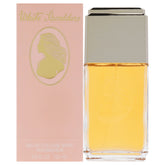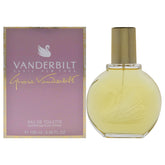Perfume is a mark of identity.
The precise formulae of commercial perfumes are kept secret. Even if they were widely published, they would be dominated by such complex ingredients and odorants that they would be of little use in providing a guide to the general consumer in description of the experience of a scent. Nonetheless, connoisseurs of perfume can become extremely skillful at identifying components and origins of scents in the same manner as wine experts.
The most practical way to start describing a perfume is according to the elements of the fragrance notes of the scent or the "family" it belongs to, all of which affect the overall impression of a perfume from first application to the last lingering hint of scent.
The trail of scent left behind by a person wearing perfume is called its sillage, after the French word for "wake", as in the trail left by a boat in water.
Fragrance notes
Perfume is described in a musical metaphor as having three sets of notes, making the harmonious scent accord. The notes unfold over time, with the immediate impression of the top note leading to the deeper middle notes, and the base notes gradually appearing as the final stage. These notes are created carefully with knowledge of the evaporation process of the perfume.
- Top notes: Also called the head notes. The scents that are perceived immediately on application of a perfume. Top notes consist of small, light molecules that evaporate quickly. They form a person's initial impression of a perfume and thus are very important in the selling of a perfume. Examples of top notes include mint, lavender and coriander.
- Middle notes: Also referred to as heart notes. The scent of a perfume that emerges just prior to the dissipation of the top note. The middle note compounds form the "heart" or main body of a perfume and act to mask the often unpleasant initial impression of base notes, which become more pleasant with time. Examples of middle notes include seawater, sandalwood and jasmine.
- Base notes: The scent of a perfume that appears close to the departure of the middle notes. The base and middle notes together are the main theme of a perfume. Base notes bring depth and solidity to a perfume. Compounds of this class of scents are typically rich and "deep" and are usually not perceived until 30 minutes after application. Examples of base notes include tobacco, amber and musk.
The scents in the top and middle notes are influenced by the base notes; conversely, the scents of the base notes will be altered by the types of fragrance materials used as middle notes. Manufacturers who publish perfume notes typically do so with the fragrance components presented as a fragrance pyramid,[36] using imaginative and abstract terms for the components listed.


















Leave a comment
Please note, comments need to be approved before they are published.